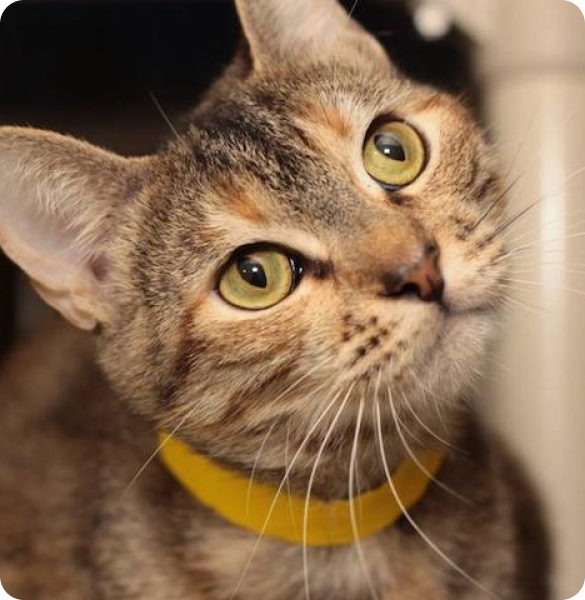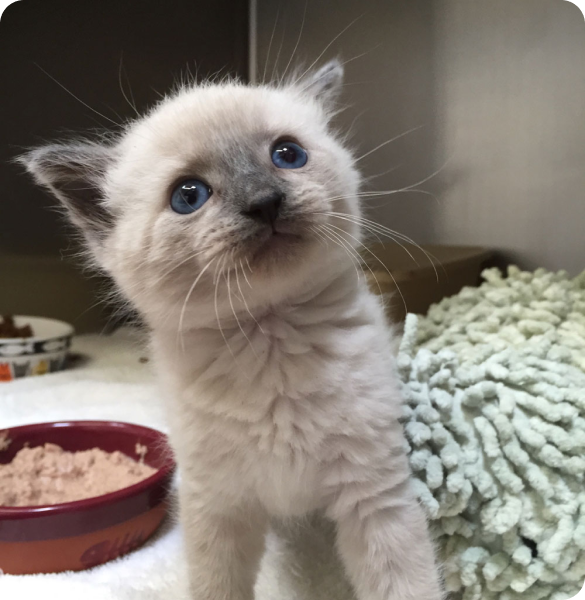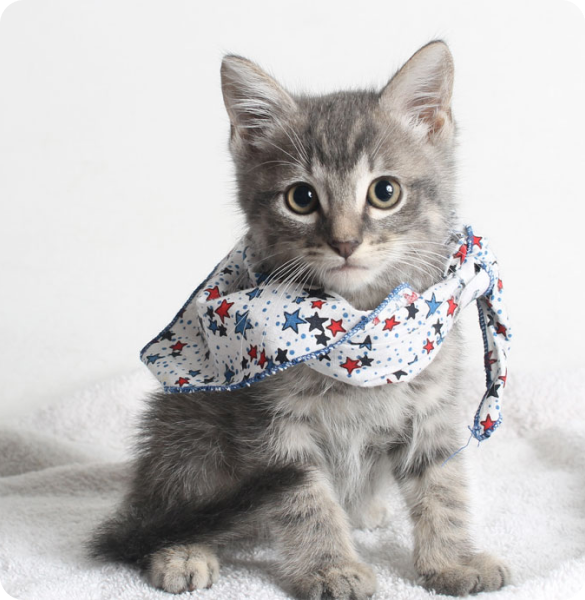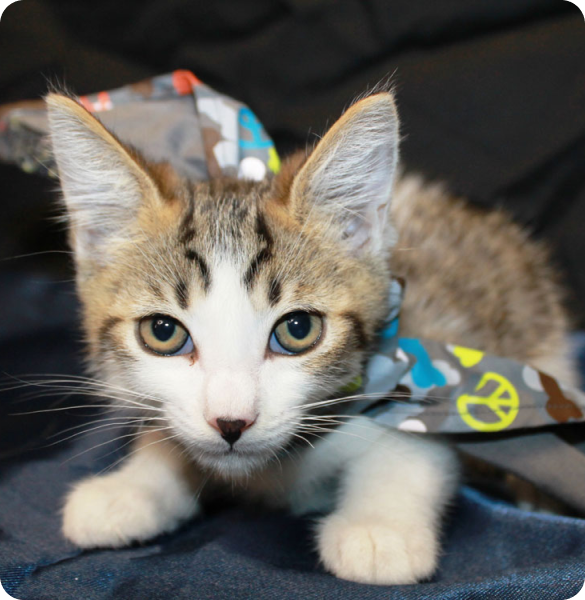Rayna Barker – Good Sense Dog Training
Obedience, behavior problems, helping newly adopted dogs adjust to their new homes & families woofprints@earthlink.net
Brandon Fouche
Los Angeles Dog Aggression Expert
Puppy Imprinters
Master Trainer, Larry Hill
Dog Man
FREE CLASS every Sunday at the Coliseum. This is a walking class not training.
Leroy Singh
Dog Behavior Training and other services. Good choice for leash aggression.
(213) 446-0720
The Urban Pet Dog Training
Dogtown Dog Training/Lynn Medlin
Group classes (Westside)
Pasanita Obedience Club
Group classes (Pasadena)
Pack Hike
Sundays 8:30am. Practice walking among other dogs on leash (Griffith Park)
miagyzander@me.com
Driving with your Dog
7 Tips for Driving With Your Dog Read Article

Vet HelpNKLA Pet Adoption Center
Open noon-8pm, 7 days a week
1845 Pontius Ave, Los Angeles 90025
(424) 208-8840
Los Angeles Animal Services
(for full list of LA City Shelters)
Go Dog LA
How to Pick the Right Dog
Los Angeles Dog Company
Daycare and boarding
(310) 721-4085
Sara Guice
Daycare and boarding
(310) 721-4085
Blue Collar Working Dog
Petco
7262 Rosemead Blvd, San Gabriel 91775
(626) 287-9847
The Urban Pet
4475 Santa Monica Blvd, Los Angeles 90029:
(323) 664-4700
7515 Beverly Blvd, Los Angeles 90036:
(323) 933-2100
900 Fair Oaks Ave, South Pasadena 91030:
(626) 403-9100
aRomatherapy Mobile Pet Grooming
(310) 991-7226

Einhorn Insurance
Dog Liability Insurance for homeowners, renters, and landlords.
Visit their website www.einhorninsurance.com for more information about insurance for responsible owners of “dangerous” breeds (as labeled by most insurance companies).
Call 858-336-4644 or email dori@einhorninsurance.com

North Figueroa Animal Hospital
No appointment necessary for spay/neuter
Mon-Fri @ 9:00AM
5550 N Figueroa St, Los Angeles, CA 90042
(323) 258-8068
Spay Neuter Project of Los Angeles
several locations(310) 574-5555 or (888) 937-7295
Affordable Animal Hospital
Appointments necessary
1040 S Long Beach Blvd, Compton, CA 90221
(310) 639-1234
Dr. Shipps Animal Hospital
Appointments necessary
351 Foothill Rd, Beverly Hills, CA 90210
(310) 550-0101
Dr. Shipps Animal Hospital
Vanderhoof Veterinarian Hospital
2235 Lake Ave Ste 101, Altadena, CA 91001
(626) 798-5901
North Hollywood Animal Care Clinic
11561 Oxnard St, North Hollywood, CA 91606
(818) 508-8530

The inclusion of a service, organization or program in this listing is NOT an endorsement or recommendation by Downtown Dog Rescue. We have no affiliation with any of the organizations or programs listed. We strongly suggest you evaluate each group and review carefully their policies and requirements before applying. Please also note that some of these programs require that the request be made prior to the animal being treated, and that most programs are limited in the amount they can grant for a specific request. Generally, grants are between $25 – 500, so it’s important to check with several sources and to also try to raise funds yourself.
Care Credit – personal line of credit for healthcare treatments and procedures for your entire family, including your pets. www.carecredit.com
The Pet Lifeline Program – offers financial aid for pet owners who are struggling to pay their vet bills. www.petnewsdaily.com/financial-assistance/
In Memory of Magic (IMOM) is dedicated to insuring that no companion animal has to be euthanized simply because his or her caretaker is financially challenged. Request must be made before animal is treated. www.imom.org Phone: 866-230-2164RedRover Relief (formerly LifeLine Grants) – The RedRover Relief program provides funding to Good Samaritans, animal rescuers and pet owners to help them care for animals in life-threatening situations. Phone: 916-429-2457
Ozzy Foundation – helps pet guardians with the financial costs of veterinarian bills and provides a supportive place for those caring for a chronically-ill pet. www.ozzyfoundation.org
Angels 4 Animals working together with vet clinics and owners Angels 4 Animals Guardian Angel Program helps pet owners with financial assistance for a sick or injured pet. www.angels4animals.org Phone: 916-941-9119
Brown Dog Foundation dedicated to helping families who find themselves in a temporary financial crisis at the same time their pet requires life-saving treatment or life-sustaining medications. www.browndogfoundation.org
Canine Cancer Awareness provides assistance with veterinary care for dogs with cancer whose families are financially unable to provide treatment. www.caninecancerawareness.org
Muffin Diabetic Pets Association assists pets with diabetes. www.petdiabetes.net/fundThe Mosby Foundation assists in the care of critically sick, injured, abused and neglected dogs through financial support and public education. www.themosbyfoundation.org
Magic Bullet Fund (Cancer) helps people who have made room in their homes and hearts for a canine companion, but do not have the financial resources to provide cancer treatment.
American Animal Hospital Association has an emergency fund available to assist low-income pet owners with veterinary expenses. www.aahahelpingpets.org Phone: 866-4-HELPETS 866-443-5738
Riley Rolph Animal Rescue Foundation provides financial assistance to existing, reputable animal rescues and raises awareness for animal welfare through its information resource network. www.rileysrescue.org
The Pet Fund may not be able to approve emergency care funding prior to treatment, due to time delay in processing requests. www.thepetfund.com Phone: 916-443-6007
Labrador Harbor provides financial assistance for owners and rescue organizations caring for Labrador Retrievers in need of non-routine veterinary care. www.labradorharbor.org/guidelines.html
Actors and Others for Animals is a Southern California community-based organization serving the greater Los Angeles area. Among other services, the organization provides financial assistance for emergency medical procedures for those of limited income. www.actorsandothers.com/emergencyhelp.html Phone: 818-897-8760
Animal Rescue Foundation of Dana Point (ARF) (services may be limited to spay/neuter assistance) www.petprojectfoundation.org Phone: 949-240-2899
Four Legged Friends Foundation’s Sunny Day Fund provides veterinary assistance for low income people in Los Angeles. www.flff.org/sunnyday.html Phone: 310-441-2888
Mercy Crusade – Mercy Crusade’s Spay & Neuter Clinic of Ventura County is dedicated to ending pet overpopulation. www.dogcatfix.com Phone: 818-597-2926 or 805-278-4433
Pet Assistance Foundation – Holiday Humane Society (private hospital, offers some of the lowest cost services in LA, covers basic procedures only) www.petassistancefoundation.org Phone: 877-772-9738
Pet Orphans of Southern California – program for individual rescuers, helps primarily with spay/neuter, vaccinations, adoption events. Also has “Good Samaritan Fund,” to assist with medical emergencies, as funds are available. www.petorphans.org Phone: 818-901-0190
The Sam Simon Foundation provides low cost or free non-orthopedic surgeries to low income residents of Los Angeles. www.samsimonfoundation.com/surgeryClinic.asp Phone: 1-888-364-7729
Voice for the Animals Foundation – Helping Friends Program helps seniors, people with disabilities, terminal illnesses or fixed incomes take care of their pets. www.vftafoundation.org Phone: 310-392-5153
Labrador Lifeline Aids purebred Labrador Retrievers in need of urgent medical care, or other assistance in order to live a full and productive life. www.labradorlifeline.org
LabMed helps rescued Labradors in need of medical attention. www.labmed.org (Rescue Only)
HandicappedPets.com www.handicappedpets.com
Paws/LA provides services to assist low-income seniors and people disabled by a life-threatening illness to help them keep and care for their pets. www.pawsla.org
Feline Veterinary Emergency Assistance provides financial assistance to cat and kitten guardians who are unable to afford veterinary services in life-threatening situations. www.fveap.org
Sue Freeman’s Guide to Rescue Cats website contains a list of pet financial-assistance resources in Los Angeles and the surrounding area. www.rescueguide.com/aid.html
National Center for Emotional Support Easiest, lowest-cost way to get an ADA recognized doctor’s note for your emotional-support animals, so you can live with them even where pets are denied. https://www.facebook.com/NationalCenterForEmotionalSupportAnimals; Phone: (256) 400-DOGS (3647); Email: contact@emotional-supportanimals.com;
Zillow
Hotpads
Pet Care in Condos and Apartments
How to Write a Thorough Resume… For Your Pet!
Pets and Car Travel Safety
PadMapper: Pet friendly apartments in Santa Monica
PadMapper: Pet friendly apartments in Los Angeles
PadMapper: Pet friendly apartments in Beverly Hills
How to Find a Pet Friendly Apartment
How to Keep a Dog Happy and Healthy in a Small Apartment
Sample Letter: Requesting Permission From a Landlord to Have a Pet
Pets have very different types and lengths of care so they all have different grooming requirements. All pets – especially those with long hair, wire-haired or woolly-coated breeds – should be groomed regularly otherwise the hair can become tangled, knotted and accumulate foreign bodies such as grass awns, dirt and small pieces of gravel. Grass awns can penetrate through the skin and cause serious infection with abscess formation. Gravel picked up into the feet can be very painful and lead to local ulceration, self-trauma and lameness.
Grooming also removes other accumulated debris such as skin cells, glandular secretions, inflammatory cells, bacteria and their breakdown products, pollen, mold spores, and so on.

Neglected animals develop an unkempt appearance and look untidy and uncared for. Long standing neglect can lead to irritation, self-trauma, and bacterial infections. It is particularly important to remove shed undercoat hairs so that thermoregulation (control of body temperature) can be maintained normally. Regular grooming to remove this hair also reduces the amount shed into the animal’s environment.
Excessive hair loss could indicate an underlying disease problem so you should consult with your veterinarian about this.
Generally speaking you should groom your pet for 15-30 minutes every week and it helps if your pet enjoys the experience – so start the process early in life and make it a regular event.
A wide selection of combs, brushes and clippers are available and you it is important to choose the tools that are best suited to your pet’s coat type. Very fine-toothed combs are unsuitable for thick coarse coat types.
Combs should have rounded ends – not sharp edged ends otherwise they can scratch the skin. The comb depth needs to be long enough to get to the base of the hairs. Stripping combs are designed to remove dead hair – but care is needed when hair is tangled in a close matt because the skin can be twisted into it – and rough stripping can bruise or even tear the skin.
A carder – flat board with thin bent metal teeth, is useful to remove small hair mats and dead hair. Gloves with teeth built into them are also popular with some people.
Brushes should be used with the lay of the hair in smooth-coated animals, and against the lay of the hair in animals in which the coat is meant to stand up.
Electric clippers are essential for busy kennels or veterinary practices as they make trimming so much easier. They are particularly helpful to trim long hair between the toes and footpads, and behind the ears. Care is still need so as not to scratch the surface of the skin causing “clipper rash” or even small cuts.
If you use scissors always use them with a close blades to tease matted hair apart. NEVER use them to cut hair because you may cut skin twisted up into the matted coat.
“Plucking” is a technique used by groomers to pull out dead hair using their thumb and forefinger. Excessive hairs are also “plucked” out of the ear canals in some dogs.

Washing with a shampoo should always be carried out after an animal has become soiled or has been swimming because all sorts of chemicals, organisms and other products could be accumulated in the coat. If left they may cause local irritation and lead to infection, as well as adversely affecting the natural sheen and appearance of the coat.
A wide variety of mild shampoos are available for bathing cats and dogs and other pets. Only use soap shampoos in soft water because they leave a mineral film on the coat if used in hard water areas. Detergent-based shampoos can be used in hard water but they are harsher on the coat. Medicated shampoos e.g. flea preparations can also be used. The benefits of the use of conditioners, pH control and other human preparations has not been fully evaluated in pet animals.
Never use paint stripper or other solvents to remove paint. Tar, creosote or another noxious substance that has dried on the coat because the solvents are themselves potentially toxic and can cause chemical burns to the skin. Cut or clip the hair off instead.
Information obtained from: http://www.enter.net/~pstacks/petpop.htm
Two (or three) cats can be better than one! With two cats in your home, your family will be able to enjoy the true social nature of cats and their relationship with each other. Having a playmate provides companionship and active stimulation during your absence and keeps both cats more playful and youthful in their later years. But how you prepare for the new cat’s arrival and how you manage the transition is very important. Cats, in general, are very cautious of new places and things. They don’t like change in their lives, and it will take time – the amount will vary with each individual cat – for your new cat to adjust to unfamiliar surroundings. A kitten is usually easier to integrate into the household with a full-sized adult. Cats of opposite sexes usually get along better.

Here are a few tips to help provide a friendlier transition:
– Set the new cat up in a small “safe room,” a bathroom with a tiled floor or a confined space he can call his own for a week or so. Get new food and water bowls, a litter box, scratching post/pad and bedding. Visit him frequently with interactive toys, special treats and lots of hands-on loving during the first week.
– Feed your resident cat and the newcomer on opposite sides of the door of the “safe room” so they can smell each other and associate the new cat smell with an enjoyable experience. Gradually move the food dishes closer to the door until they are eating calmly directly opposite each other.
– Switch scents by switching their beds between the new cat and the resident cat so they have a chance to become accustomed to each other’s scent. Another option is to rub a small towel on each cat and place the towel from the opposite under the food dish of the other cat.
– Begin an exchange of living space once your new cat is settled in and eating regularly in the confined room. Let the new cat have some free time in the house while you confine the resident cat in the “safe room.” This is another way the cats can experience each other’s scents without meeting face-to-face. It also helps the new cat get comfortable with her new surroundings without experiencing the other cat.
– Securely prop the door open a crack so they can safely see each other for the first time when the cats seem to be relaxed with everything you have done so far. Place treats on each side of the door and connect two toys with several inches of string slipped under the door so they can try playing with each other.
– When the cats seem to be calm in each other’s presence, it’s time to open the “safe room” door and let her out for a few minutes. The length of time should be increased gradually. Always allow the new cat an escape path back to her “safe room” if needed.
This process may take a few weeks or a few months depending on the personalities and territorial needs of the cats. If from time to time your cats become hostile or fearful, return the newcomer to the “safe room,” close the door and let them calm down. Back up one stage in this process and begin again. Minor setbacks don’t ruin a growing friendship, but an aggressive encounter will be remembered a long time and should be avoided. The time you spend slowly orchestrating a proper introduction of your cats will eventually be rewarded with years of harmonious habitation and loving companionship.

The key to successful cat-dog introductions is to expose them to one another gradually under controlled conditions. You want to avoid creating situations where the cat runs away and the dog’s prey-chase instinct is activated. If your dog has previously lived with a cat, and your new cat has previously had positive experiences with dogs, they may progress quickly to tolerating one another. However, if you have an adult dog who has never been socialized to cats, the introduction should be a very gradual process lasting up to 30 days. In either case, train your dog to sit and stay reliably before bringing your new cat home. This may give you somewhat greater control once the introductions have been made. Remember that these steps are progressive, so go on to the next step only when you feel your dog and cat have “mastered” the previous one.
1. On day 1, confine your new cat to his or her own room at first. After a few hours, confine the dog in a fenced-in yard or basement or separate room, and allow the cat to explore the rest of the house. Then put the cat back in his or her own room, so the dog has an opportunity to become familiar with the cat’s scent. Put a baby gate up but leave the door closed.
2. On day 2, crack open the door to the cat’s room a couple inches and allow the dog to sniff and see through the opening for 30 seconds. Reward the dog for appropriate behavior. Repeat this step a couple more times during the day. Continue to give the cat the opportunity to explore the house when the dog is securely confined out of sight.
3. On day 3 and subsequently, increase the “viewing intervals” by short increments until the dog can watch the cat quietly for a few minutes. Reward good behavior.
4. Allow the dog to view the cat with the door completely open, with the baby gate still in place, for a few minutes at a time. If the dog is tolerating the cat, go into another room. Call the dog to you and play a game with him or her. Then ignore both animals (but keep attuned to them!) and engage in some other activity. The dog will start to lose interest in the cat.
5. Eventually work up to leaving the door to the cat’s room open, with the baby gate still up, whenever you are at home. Always close the door when you are not present! Some pet owners will always need to keep the dog and cat separated when they aren’t around to supervise, but others will find that after a couple months’ probation, the dog and cat are OK together by themselves. It’s far better to err on the side of caution, however, to prevent tragedy. Even after your dog and cat are peacefully co- existing, make sure that the cat’s food bowl and litter box are out of the dog’s reach. Keep the cat from approaching the dog when the dog is eating or chewing on a bone.
One of the most effective formulas I’ve found for removing ANY odor was from Popular Science Magazine. Mix 1 quart of Hydrogen Peroxide, with 1/4 cup of Baking Soda, and one tablespoon of liquid dishwashing soap. Saturate the affected area, rinse thoroughly with clean water, and the smell is gone. This is non-toxic and safe for your animals and children, and those with allergies. This is especially helpful for removing skunk odor from your outdoor animals.
As always, test a small portion of fabric for color fastness, before treating a large area.

Kitty has decided to use something other than the box for his ‘business.’ Don’t throw him outside, just take some steps to retrain him.
1. Try to find out why he stopped using the box, or began using other places. Is he stressed out over a major change in the home? Does he have a urinary infection? Is he spraying or urinating? (He will squat to urinate. If he is standing up to ‘urinate,’ he is spraying/marking his territory. There are other tips to cover this.) Whatever the reason, you must take steps to remove the stressor, or help Kitty manage his stress.
1a. With urinary infections, you will need to follow your vet’s instructions, but also ask about UI Maintenance foods, your water quality, and any other things you should do to help your Kitty recover.
2. NEVER DISCIPLINE A CAT FOR MISTAKES. This will lead to other behavior problems. Instead, work on retraining him.
3. Clean all of the accidents with more than plain soap and water. Check Odor Removers Section for better formulas and products to clean pet stains.
4. Add another sand box to the household in a place different than the other boxes. Show Kitty this new box, and praise him for investigating it, but don’t expect him to use it right then.
5. Replace the old sandbox and sand. Kitty may have stopped using the old sandbox, not because you couldn’t keep it clean, but because the plastic box retains odors.
6. Give your Kitty lots of praise and affection around the new boxes, so he will want to please you, by using the boxes.
7. If he continues to use one particular spot, place a sandbox in that spot and slowly move it to a location you can be satisfied with. This is a last resort measure, because it could take several months to move the box.

Kitty keeps returning to the scene of an ‘accident’ to do her business. The first step to retraining her is to clean the area with an Odor Removing Formula from the other tips section. The second step is to change her attitude about that area. Try storing her toys on top of the ‘accident spot.’ Cats don’t like to soil their whole home, and by putting her toys on the accident area, she will instinctively not use this area.
To remove the smell of urine from just about anything, first clean it with some sort of soap or kitchen cleaner. Then clean it with lemon juice. If you don’t like the smell of lemon juice follow it up with a little bit of vanilla extract.
If your cat seems to be tinkling anywhere and everywhere, this could be more of a health problem than discipline. (Cat’s squat to urinate; they stand up to spray/mark their territory.) Urinary infections in cats are very similar to humans: they need to go more often-sometimes so suddenly that they can’t get to the sandbox. Another indication of UI is discolored urine, indicating blood in the urine. One last indication of UI is very strong, acrid smelling urine. Take your kitty to the vet if you suspect UI, it is easily treated.
Kitty got mad at someone in the house and soiled a chair or a bed. The first thing to do is clean the spot(s) with an Odor Removing Formula. The next step is to change her attitude about that area. Start giving Kitty lots of attention and affection in the area she soiled. Cats don’t like to soil their entire home, and by giving her attention in a soiled spot, you are convincing her that this is not a sand box replacement area.
Yelling and screaming at the cat is the worst way to correct bad behavior.
The best way to correct bad behavior is to eliminate the factor that motivates or initiates the behavior. If the cat enjoys playing with some particular item, hide it for several weeks. If he is curious about something, explore it with him so you can control his reactions.
If he continues to misbehave, use a specific loud noise to startle him. I mimic the sound of a game show buzzer. I have read that a low growl from you will turn your kitty around. Although that would work for me, our cats ignored my husband. As a last resort, a water gun, or spray bottle will deter bad behavior. NOTE: Use these sparingly, or they will cease to have their effectiveness. Eliminating the behavior motivator is the better answer.
If your cat is doing something it shouldn’t be doing, you can use a spray mist bottle filled with cold water to “mist” them.
I recommend being several feet away so that your cat does not associate the spray with you, rather it should associate the spray with the plant or whatever it was messing with.
When training kittens for the sandbox: be consistent, and constantly alert. Take the kitten to the sandbox at these times: after they wake up from a nap and several minutes after they start playing, after every meal, and every couple of hours through the day. Kittens are much like children, they don’t know they need to ‘go’ until the opportunity is presented to them. If you consistently take the kitten to the sandbox, the kitten will learn that you want them to use this particular box for their business.
This idea is from one of our members-Callie. Although I’ve never used it, I believe it is a good tip. Kitty has chosen a spot (outside his box) to do his business. You’ve cleaned the spot with an Odor Remover Formula (found in the other tips section), now you need to retrain him to use the box. One step is to place an office rug protector (plastic mat with little knob/spikes on the
bottom) upside down over Kitty’s spot. The knobs will be uncomfortable on his paws and deter him from using his old spot.

A cat’s sense of smell is highly sensitive. Although they return to the same place they have been before to eliminate their waste, they will find a new place if the old one smells too strong. Plastic can retain odors; your cat can smell those odors even if you can’t. If Kitty has stopped using the box, even if you keep it clean, it could be that he can smell the odors from the box. You can try to clean the box with the Odor Removing formula from the other Tips sections, or you can try purchasing a new box. Remember that the cat can smell things you can’t so most cleaners will be too strong for your cat’s nose, causing him to turn away from the box.
To find a pet near you, please go to www.petfinder.com or www.laanimalservices.com in Los Angeles.
Check out Pet Care Foundation’s TV show ADOPT A PET TODAY
For assistance in keeping your pet call 213-403-0129 for free spay/neuter, vaccinations, licensing fees, fence/gate repair, dog training, some vet care, and tenant/property owner negotiations. Your call will be
returned within 48 hours.